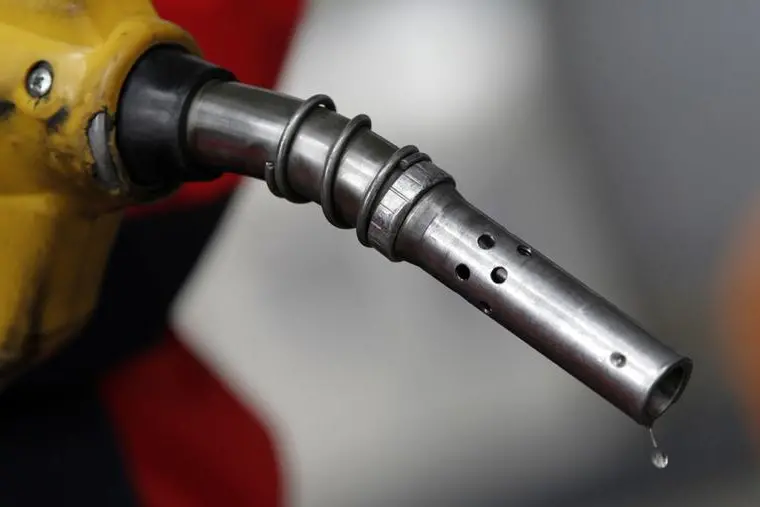PHOTO
(John Kemp is a Reuters market analyst. The views expressed are his own)
By John Kemp
LONDON, April 20 (Reuters) - Global refining margins have improved significantly in recent weeks which should support strong demand for crude and lend some strength to both spot prices and spreads in the short term.
While diesel markets remain oversupplied and margins poor, gasoline consumption is booming and margins have improved sharply, improving economics for many refineries.
There is no straightforward way to estimate the profitability of turning crude into products in real time since every refinery processes a different slate of crudes and produces a different slate of products.
Even for the same refinery, crude and product slates can vary significantly over short periods as the refinery's planning department takes advantage of short-term opportunities in the market place.
But the multitude of indicators on refinery margins all point to an improvement in the United States and globally since the lows hit in February, which is helping support crude oil prices.
CRACKING SPREADS
The most generic refining indicators compare the cost of acquiring a benchmark crude and processing it into major products such as gasoline and diesel.
The 3-2-1 crack spread compares the acquisition cost of three barrels of crude with the selling price of two barrels of gasoline and one barrel of diesel.
Other popular indicators are the 5-3-2 crack (five barrels of crude, three barrels of gasoline and two barrels of diesel) and the 2-1-1 crack (two crude, one gasoline and one diesel).
The 3-2-1 crack has improved from a low of around $12 per barrel in early February to around $18 so far in April, based on futures prices for U.S. light sweet crude, gasoline and diesel.
There have been broadly comparable improvements in the 5-3-2 and 2-1-1 crack spreads over the same period (
http://tmsnrt.rs/1WdLqSU
).
While refining margins for making diesel and other distillates have continued to deteriorate this has been more than offset by a sharp improvement in gasoline prices and margins (
http://tmsnrt.rs/1WdLYbu
).
REFINING INDICATORS
Generic crack spreads do not capture all the complexity of turning crude into fuels, lubricants, asphalt and petrochemical feedstocks.
But many refining companies publish their own indicators for refineries in their portfolio and they all show margins improving significantly from the lows in February.
Indicators published by the refiners capture much more of the complexity in the refining process though still not all of it.
Valero, the largest independent refiner in the United States, reports indicative margins for its refineries across North America, which is a good proxy for the health of the U.S. and Canadian refining sector.
Valero's indicator for refineries along the U.S. Gulf Coast has improved from just $11.50 in February to over $17 so far in April.
Valero's Midcontinent indicator is up from less than $8 in February to more than $11 in March and April ("Key Market Prices", Valero Corp, weekly update).
The indicator for Atlantic Coast refineries is up from $9 to $14 while the indicator for the West Coast has risen from $11 to almost $20.
While Valero's indicators are restricted to North America, BP publishes an aggregate indicator for the refineries in its global portfolio across North America, Europe and Asia.
BP's Global Refining Marker Margin has improved from a recent low of $10.50 in the first quarter to $12.80 so far in the second quarter ("Trading conditions update", BP, April 13).
BP's global marker has almost doubled from a low of less than $7 per barrel in early February to more than $13 in the second week of April.
GASOLINE DEMAND
Refining markers published by BP and Valero as well as the generic crack spreads calculated from futures prices are all for the gross margin obtained from turning crude into products.
They do not take into account refineries' operating costs (for gas, power, water, hydrogen and catalysts) or capital costs (including depreciation).
But they are meant to provide a signal about the "directional impact" of changes in the trading environment on refiners' profitability, according to BP.
Current refining margins are not high but have moved off their recent lows and look reasonably healthy from a longer term perspective.
Refiners' input costs are also moderate at the moment (and substantially lower than a few years ago owing to reductions in the cost of utilities and platinum catalysts).
Refiners are currently making enough money from producing gasoline to cover the costs incurred in producing not-very profitable distillate.
So they have every incentive to process as much crude as possible, which is helping keep oil prices and spreads firm.
The strengthening of cracking margins since February has coincided with rising spot crude prices as well as tightening time spreads especially for Brent.
A consistent picture emerges in which oil prices have been lifted since February by strong demand for gasoline as well as declining non-OPEC crude production and an influx of speculative interest from hedge funds.
Some commentators have suggested the rally in oil prices since early February is entirely due to the activity of hedge funds, but the simultaneous rise in global refining margins suggests it has a fundamental component too.
(Editing by Susan Thomas) ((john.kemp@thomsonreuters.com; +44 207 542 9726 and on twitter @JKempEnergy))
By John Kemp
LONDON, April 20 (Reuters) - Global refining margins have improved significantly in recent weeks which should support strong demand for crude and lend some strength to both spot prices and spreads in the short term.
While diesel markets remain oversupplied and margins poor, gasoline consumption is booming and margins have improved sharply, improving economics for many refineries.
There is no straightforward way to estimate the profitability of turning crude into products in real time since every refinery processes a different slate of crudes and produces a different slate of products.
Even for the same refinery, crude and product slates can vary significantly over short periods as the refinery's planning department takes advantage of short-term opportunities in the market place.
But the multitude of indicators on refinery margins all point to an improvement in the United States and globally since the lows hit in February, which is helping support crude oil prices.
CRACKING SPREADS
The most generic refining indicators compare the cost of acquiring a benchmark crude and processing it into major products such as gasoline and diesel.
The 3-2-1 crack spread compares the acquisition cost of three barrels of crude with the selling price of two barrels of gasoline and one barrel of diesel.
Other popular indicators are the 5-3-2 crack (five barrels of crude, three barrels of gasoline and two barrels of diesel) and the 2-1-1 crack (two crude, one gasoline and one diesel).
The 3-2-1 crack has improved from a low of around $12 per barrel in early February to around $18 so far in April, based on futures prices for U.S. light sweet crude, gasoline and diesel.
There have been broadly comparable improvements in the 5-3-2 and 2-1-1 crack spreads over the same period (
While refining margins for making diesel and other distillates have continued to deteriorate this has been more than offset by a sharp improvement in gasoline prices and margins (
REFINING INDICATORS
Generic crack spreads do not capture all the complexity of turning crude into fuels, lubricants, asphalt and petrochemical feedstocks.
But many refining companies publish their own indicators for refineries in their portfolio and they all show margins improving significantly from the lows in February.
Indicators published by the refiners capture much more of the complexity in the refining process though still not all of it.
Valero, the largest independent refiner in the United States, reports indicative margins for its refineries across North America, which is a good proxy for the health of the U.S. and Canadian refining sector.
Valero's indicator for refineries along the U.S. Gulf Coast has improved from just $11.50 in February to over $17 so far in April.
Valero's Midcontinent indicator is up from less than $8 in February to more than $11 in March and April ("Key Market Prices", Valero Corp, weekly update).
The indicator for Atlantic Coast refineries is up from $9 to $14 while the indicator for the West Coast has risen from $11 to almost $20.
While Valero's indicators are restricted to North America, BP publishes an aggregate indicator for the refineries in its global portfolio across North America, Europe and Asia.
BP's Global Refining Marker Margin has improved from a recent low of $10.50 in the first quarter to $12.80 so far in the second quarter ("Trading conditions update", BP, April 13).
BP's global marker has almost doubled from a low of less than $7 per barrel in early February to more than $13 in the second week of April.
GASOLINE DEMAND
Refining markers published by BP and Valero as well as the generic crack spreads calculated from futures prices are all for the gross margin obtained from turning crude into products.
They do not take into account refineries' operating costs (for gas, power, water, hydrogen and catalysts) or capital costs (including depreciation).
But they are meant to provide a signal about the "directional impact" of changes in the trading environment on refiners' profitability, according to BP.
Current refining margins are not high but have moved off their recent lows and look reasonably healthy from a longer term perspective.
Refiners' input costs are also moderate at the moment (and substantially lower than a few years ago owing to reductions in the cost of utilities and platinum catalysts).
Refiners are currently making enough money from producing gasoline to cover the costs incurred in producing not-very profitable distillate.
So they have every incentive to process as much crude as possible, which is helping keep oil prices and spreads firm.
The strengthening of cracking margins since February has coincided with rising spot crude prices as well as tightening time spreads especially for Brent.
A consistent picture emerges in which oil prices have been lifted since February by strong demand for gasoline as well as declining non-OPEC crude production and an influx of speculative interest from hedge funds.
Some commentators have suggested the rally in oil prices since early February is entirely due to the activity of hedge funds, but the simultaneous rise in global refining margins suggests it has a fundamental component too.
(Editing by Susan Thomas) ((john.kemp@thomsonreuters.com; +44 207 542 9726 and on twitter @JKempEnergy))












